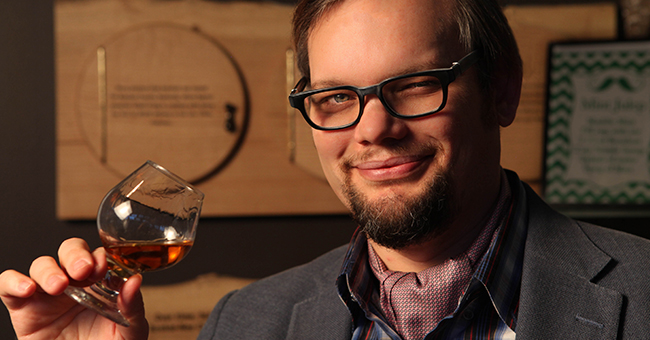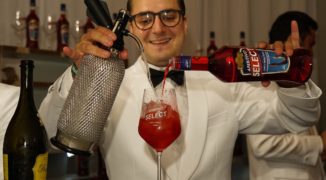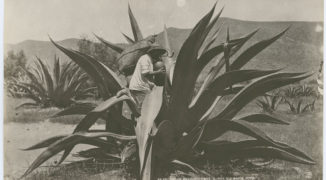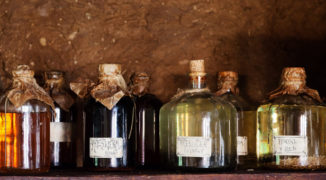Fred Minnick is perhaps the foremost name in bourbon writing. His books, “Whiskey Women,” “Bourbon Curious,” and most recently, “Bourbon: The Rise, Fall and Rebirth of American Whiskey,” are esteemed collections of in-depth whiskey history, culture and insights on enjoying the spirit. Writing with style and expertise, Minnick’s extraordinary knowledge of all things bourbon has warranted numerous awards and accolades. Last week, in an exclusive chat with Tales 365 members, he spoke with us about bourbon’s past, present and future. Here are just a few of the things we learned.
1. In some ways, Prohibition made illness seem widespread. While alcohol was outlawed in the U.S., you could still get your hands on it in some states by claiming a medical need. In the same era, the Spanish Influenza was spreading rampantly, and whiskey was believed to be the only treatment. “During Prohibition, everyone was ‘sick’ and they needed medicinal whiskey,” Minnick says. “Bourbon was a matter of national health and security for the time.”
2. World War II was largely responsible for the conglomeration of bourbon brands. During WWII, bourbon distillers were obliged to create industrial alcohol. This wasn’t financially feasible for many of the smaller distillers, making them susceptible to purchase by larger distilleries.
3. In the 1940s, the bourbon industry faced the federal government’s shakedown on monopolies. But the bourbon companies prevailed, with large companies retaining control of numerous brands.
4. In 1964, bourbon legally became an exclusive product of the United States. This was, in part, the work of The Bourbon Institute, a group headed by Lewis Rosenstiel, who was CEO of Schenley Distillers Corporation. The Bourbon Institute also worked to lower tariffs and improve trade for bourbon.
5. The Bourbon Institute created the legend of Elijah Craig. “He’s always been connected to [the story of bourbon’s conception], but they created in great detail the legends,” says Minnick. “They wanted to make bourbon feel as American as possible.” The institute embellished the story of the barn fire, in which barrels were charred, rendering whiskey’s signature smokey essence when Craig allegedly aged his whiskey in them anyway. “It’s the immaculate ‘char-ception,’” he says.
6. In the ’60s, vodka and white spirits nearly pushed bourbon completely out of the market. In response, some bourbon distillers started making a product called light whiskey to compete. “Their entire focus was to compete with vodka, and by doing so, they divested in their bourbon efforts. And the brands that did not chase vodka … like Jim Beam, Maker’s Mark and Wild Turkey, they really flourished during that time.”
7. The Japanese saved America’s whiskey. Leading up to the 1980s, bourbon sales had taken a steady plunge. “It was the Japanese who, in my opinion, brought bourbon back in a big way the 1980s and the early 1990s,” Minnick says. “During the 1980s, the Japanese were just drinking so much bourbon in comparison to the rest of the world — the sales numbers were spiking year, after year, after year.” In response, distilleries started crafting bourbons targeted at the Japanese market.
8. But then the Japanese market tanked in the early 90s, and “that changed everything.”
9. One bar called Delilah’s in Chicago and the advent of the Internet came along to save bourbon from its final threat. “At that time, a little bar in Chicago called Delilah’s had decided to create an American whiskey and beer bar. There was an event called the Kentucky Bourbon festival. And there was just a little uptick of domestic interest in bourbon but from a corporate perspective — nobody was really focusing on it in the same breadth that they were vodka or rum or tequila… But the Internet is born … And as soon as the forum world is created, straightbourbon.com comes out, and before you know it you have people in Alaska talking to people in Florida about their favorite bourbons.”
10. Bourbon made a comeback, because the people demanded it. “You have an incredible demand today that was largely brought on by consumers just wanting to drink more bourbon,” says Minnick.





